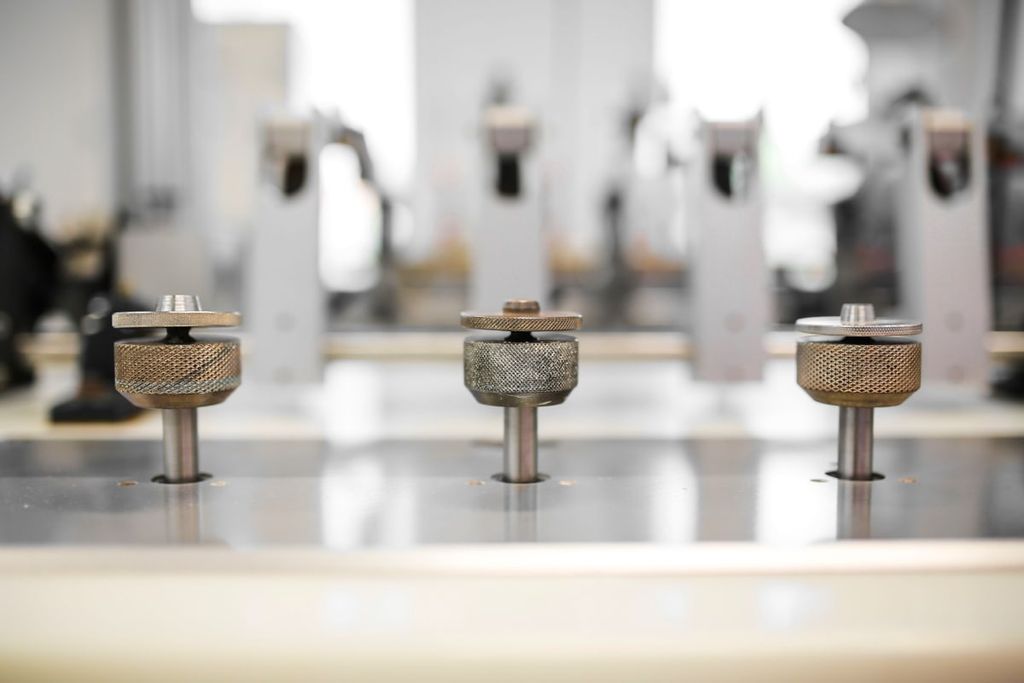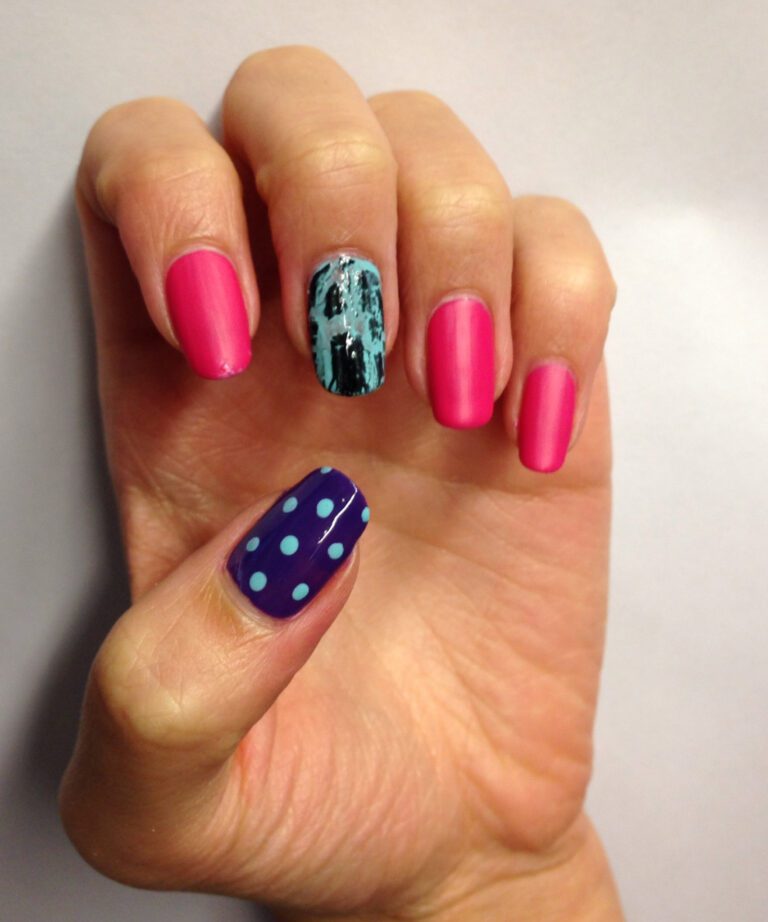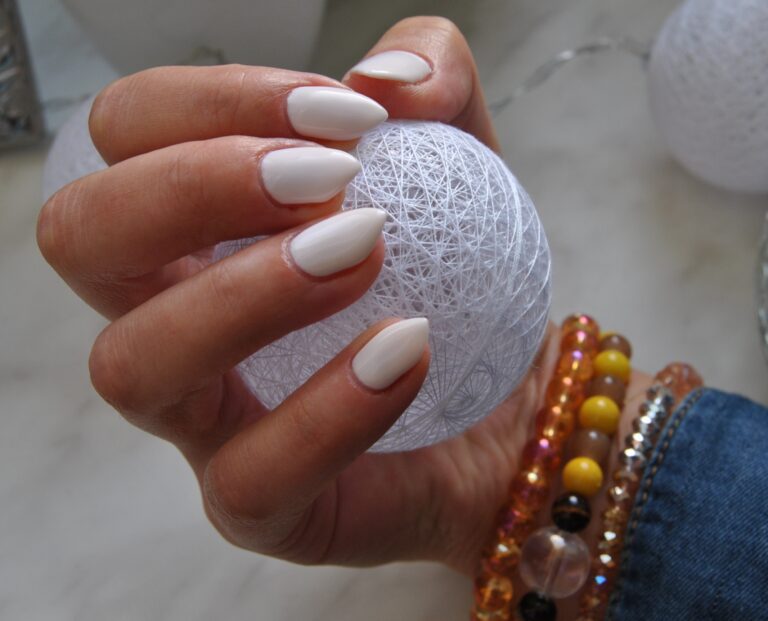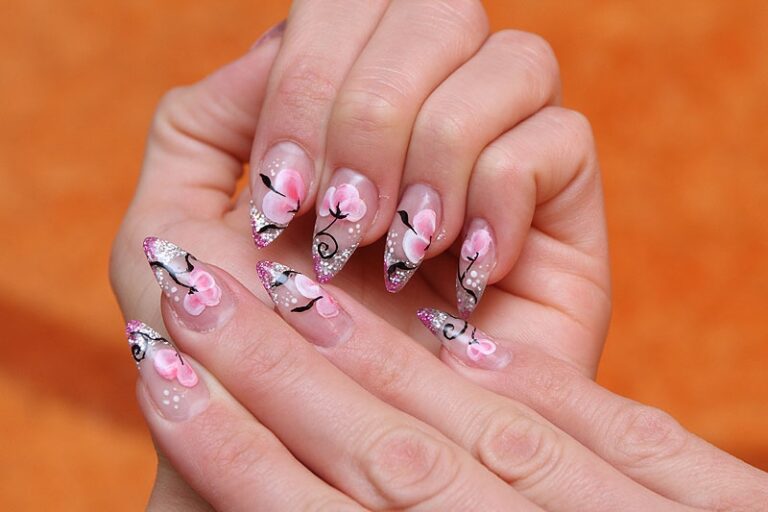“Behind the Scenes: Nail Production Occurs Where?”
Deprecated: mb_convert_encoding(): Handling HTML entities via mbstring is deprecated; use htmlspecialchars, htmlentities, or mb_encode_numericentity/mb_decode_numericentity instead in /home/u654140373/domains/nailinspire.com/public_html/wp-content/plugins/kadence-pro/dist/elements/elements-init.php on line 1267
Deprecated: Function utf8_decode() is deprecated in /home/u654140373/domains/nailinspire.com/public_html/wp-content/plugins/kadence-pro/dist/elements/elements-init.php on line 1275
The global landscape of nail manufacturing is a complex and dynamic environment, influenced by various factors such as economic trends, technological advancements, and sustainability initiatives. As we delve into the behind-the-scenes of nail production, it becomes evident that this industry plays a significant role in both local and international economies. From the leading countries in nail production to the challenges and innovations shaping its future, there is much to uncover.
Key Takeaways
- Nail production is a significant contributor to job creation and economic growth in both leading and emerging economies.
- Technological advancements and sustainable practices are driving innovations in nail manufacturing, leading to increased efficiency and eco-friendly products.
- Supply chain disruptions and market dynamics pose challenges to the nail industry, requiring adaptive strategies to mitigate their impact.
- The future of nail production is influenced by industry trends, digitalization, and the rise of e-commerce, shaping consumer behaviors and market demands.
- Quality control and standards play a crucial role in ensuring the safety and reliability of nail products, reflecting the industry’s commitment to excellence and customer satisfaction.
The Global Landscape of Nail Manufacturing

Leading Countries in Nail Production
The global nail production industry is marked by a diverse range of players, with certain countries emerging as leaders due to their extensive manufacturing capabilities and export capacities. China stands at the forefront, known for its massive production volume and competitive pricing. Following China, countries like India, the United States, and Vietnam also play significant roles in the global nail market, each contributing to the industry with their unique strengths.
In terms of technological advancement and quality, Germany and Italy are noteworthy for their precision engineering in nail manufacturing equipment, which in turn supports high-quality nail production. These countries have established a reputation for producing specialized nails that cater to specific industrial needs.
Economic policies and trade agreements significantly influence the positioning of these countries in the nail production hierarchy. For instance, tariffs and trade barriers can either bolster domestic production or make imports more attractive, depending on the country’s strategy.
Tip: Manufacturers seeking to enter or expand in the global nail market should closely monitor trade policies and currency fluctuations, as these can have a profound impact on competitiveness and market access.
The Role of Emerging Economies
Emerging economies play a crucial role in the global landscape of nail manufacturing. Their rapid industrialization and growing consumer markets have positioned them as key players in the nail production process. These economies contribute significantly to the supply of raw materials and the adoption of advanced machinery and technology in nail factories. Additionally, they have become important hubs for job creation and have a notable impact on international trade and tariffs. Their influence is expected to continue shaping the future of nail production, driving innovation and sustainability in the industry.
Understanding the Nail Production Process

Raw Materials and Sourcing
The production of nails begins with the procurement of raw materials, primarily steel or aluminum. These metals are chosen for their durability and strength, essential qualities for a product that must hold structures together effectively. Steel, being the most common material, is often sourced from large steel manufacturers or recycled from scrap metal, contributing to a more sustainable manufacturing process.
The quality of the raw materials directly impacts the final product’s strength and longevity. Suppliers are typically evaluated based on their ability to provide consistent, high-grade metals. Here is a simplified list of steps involved in sourcing:
- Identifying potential suppliers with a track record of quality and reliability.
- Assessing the purity and grade of the metal offered.
- Negotiating terms and prices to ensure cost-effectiveness.
- Establishing a supply chain that can adapt to demand fluctuations.
Tip: Always verify the certifications of raw material suppliers to ensure compliance with industry standards and regulations.
Machinery and Technology in Nail Factories
In nail factories, the use of advanced machinery and cutting-edge technology is essential for efficient production. These modern tools enable precise nail manufacturing and ensure consistent quality. A key component of the production process is the nail-making machine, a specialized piece of equipment employed for creating various types of nails. The machinery and technology in nail factories play a crucial role in optimizing production processes and maintaining high standards of quality. Here’s a brief overview of the machinery and technology used in nail factories:
- Nail-Making Machine: This specialized equipment is employed for creating various types of nails, ensuring precision and efficiency.
- Automated Production Lines: These streamline the manufacturing process, increasing efficiency and reducing manual labor.
- Quality Control Systems: Utilized to maintain high standards and ensure the quality of the produced nails.
Implementing these advanced technologies and machinery is vital for the nail production process, ensuring precision, efficiency, and quality.
Quality Control and Standards
In the nail manufacturing industry, quality control and standards are paramount to ensure that the final products are safe, reliable, and meet the expectations of consumers and regulatory bodies. Manufacturers implement rigorous testing protocols to check for dimensions, strength, and corrosion resistance, among other characteristics.
Consistency in production is achieved through a combination of skilled labor, precise machinery, and continuous monitoring. This process often includes several steps:
- Visual inspection for defects
- Mechanical testing for durability
- Chemical analysis for material composition
- Packaging checks to prevent damage during shipping
Tip: Regular calibration of equipment and training of personnel are critical to maintaining high-quality output in nail production.
Adherence to international standards, such as ISO or ASTM, is a common practice, which not only enhances product quality but also facilitates trade across different markets. The commitment to quality is a continuous journey, with manufacturers constantly seeking ways to improve their processes and products.
Economic Impact of Nail Production

Job Creation and Local Economies
The production of nails not only meets a fundamental need in various industries but also plays a significant role in fostering local economies. The manufacturing of nails generates a multitude of job opportunities, ranging from factory workers to technicians, and stimulates economic growth in regions where nail production plants are established.
- Small and medium-sized enterprises (SMEs) are particularly benefited, as they often serve as suppliers or distributors in the nail production supply chain. This symbiotic relationship enhances the economic stability of local communities and contributes to a diverse industrial base.
Investing in employee training and development is crucial for maintaining a skilled workforce in the nail production industry.
The ripple effect of nail manufacturing on job creation is evident in the increased demand for ancillary services such as transportation, maintenance, and administrative support. These jobs, while indirectly related to nail production, are essential for the smooth operation of the industry.
International Trade and Tariffs
International trade and tariffs play a significant role in the nail production industry. Tariffs on imported raw materials and machinery can impact production costs and supply chain dynamics. Additionally, trade agreements and tariffs influence the competitiveness of nail products in the global market. It’s essential for nail manufacturers to stay informed about trade policies and tariffs to navigate the economic landscape effectively. Understanding the impact of international trade and tariffs is crucial for strategic decision-making and market positioning.
Innovations and Advancements in Nail Manufacturing

Automation and Efficiency Improvements
Automation and efficiency improvements have revolutionized the nail production process, leading to significant enhancements in productivity, quality, and speed. Companies that embrace these innovations are able to achieve higher production speeds compared to traditional methods. The introduction of automated machines, such as the 2 HP Wire Nail Making Machine, has played a crucial role in accelerating the nail-making process and improving overall efficiency. This machine is a marvel of modern engineering, designed to automate the nail production process and improve overall efficiency. It is a powerful machine that has transformed the industry by streamlining production and reducing manual labor. The impact of automation and efficiency improvements is evident in the structured data below:
| Metric | Improvement |
|---|---|
| Production Speed | Increased |
| Quality | Enhanced |
| Efficiency | Optimized |
The implementation of automation not only accelerates the nail-making process but also ensures higher quality standards and optimized efficiency. As the nail industry continues to evolve, embracing sustainable practices and eco-friendly materials will be essential for long-term growth and success. It’s important for companies to stay ahead of these trends and adapt to the changing landscape of nail manufacturing.
Sustainable Practices and Eco-friendly Materials
The nail manufacturing industry is increasingly embracing sustainability as a core value, with a shift towards eco-friendly materials and practices. This transition is not only beneficial for the environment but also resonates with the growing consumer demand for green products.
Eco-friendly nail products, such as those offered by Emolyne Cosmetics, are often packaged in materials that are kinder to the environment, and their production processes are designed to minimize ecological footprints. Similarly, the emergence of eco-polish nail polishes provides vibrant colors while promoting sustainable beauty practices.
In the realm of gel nail polishes, a notable trend is the rise of brands that focus on non-toxic, sustainable ingredients and packaging. These products are formulated without harmful chemicals, aligning with the industry’s move towards safer and more responsible production methods.
Embracing eco-friendly practices in nail manufacturing not only supports environmental conservation but also enhances brand reputation and customer loyalty.
Challenges Facing the Nail Industry

Supply Chain Disruptions
The nail industry, like many others, is vulnerable to supply chain disruptions which can have a cascading effect on production and distribution. Recent events, such as labor strikes and geopolitical shifts, have highlighted the fragility of the global supply chain network.
- The UAW strike has underscored the need for robust teamwork to maintain supply chain continuity.
- Geopolitical forces are reshaping inbound freight flows, impacting how goods move from ports to consumers.
- Notable fluctuations in global supply chain logistics, with a 13% decrease since the beginning of the year, indicate the volatility of the current environment.
To mitigate these disruptions, companies are exploring innovative solutions like smart shipping pallets, which aim to enhance tracking and efficiency.
The introduction of such technologies suggests a proactive approach to overcoming challenges and ensuring the steady flow of materials and finished products. As the industry navigates these turbulent times, the resilience and adaptability of supply networks are being put to the test.
Competition and Market Dynamics
Competition and market dynamics in the nail industry present significant challenges for manufacturers and suppliers. The competitive landscape is characterized by rapid changes in consumer preferences and the emergence of new market players. Additionally, pricing pressures and the need for continuous innovation further intensify the competitive environment. To navigate these challenges effectively, nail manufacturers must stay agile and responsive to market shifts, while also prioritizing quality and efficiency in their operations.
The Future of Nail Production

Predicting Industry Trends
As we look ahead to the future of nail production, it’s essential to consider the evolving trends and consumer preferences in the industry. One key trend that is set to shape the nail manufacturing landscape is the emphasis on sustainable practices and the use of eco-friendly materials. This shift towards sustainability reflects the growing awareness of environmental impact and the demand for ethically produced nail products.
In addition to sustainable practices, the industry is also witnessing a rise in automation and efficiency improvements. Nail factories are increasingly adopting advanced machinery and technology to streamline production processes and enhance productivity. This technological advancement is expected to revolutionize the nail manufacturing sector, leading to higher output and improved quality.
Furthermore, the integration of digitalization and e-commerce is poised to transform the distribution and marketing channels for nail products. The convenience of online platforms and the accessibility of digital marketing are reshaping the way consumers interact with nail brands and make purchasing decisions.
In summary, the future of nail production is characterized by a shift towards sustainability, technological innovation, and digitalization, paving the way for a dynamic and progressive industry landscape.
The Impact of Digitalization and E-commerce
The nail industry is not immune to the transformative effects of digitalization and e-commerce. These advancements have revolutionized the way nail products are marketed, sold, and distributed. Consumers now enjoy unprecedented access to a global marketplace of nail care products, with the ability to compare prices, read reviews, and make purchases with the click of a button.
E-commerce platforms have also enabled smaller nail care brands to reach a wider audience, breaking down the barriers that once favored large-scale manufacturers. This democratization of the marketplace has spurred innovation and competition, leading to a more diverse and vibrant industry.
Embrace the digital shift by optimizing online presence and leveraging e-commerce strategies to stay competitive in the nail industry.
The integration of community feedback mechanisms, such as those seen in community-powered commerce platforms, allows consumers to influence which products are brought to market. This level of engagement not only fosters brand loyalty but also ensures that the products offered are closely aligned with consumer desires.
The future of nail production is an exciting and innovative topic that is shaping the beauty industry. As technology advances, so does the art of nail design and production. At NAILinspire.com, we are dedicated to providing the ultimate online nail art design library, where you can explore the latest trends, techniques, and inspiration for your nail creations. Join us in embracing the future of nail production and unleash your creativity with our vast collection of nail art resources.
Frequently Asked Questions
Where are most nails manufactured?
The leading countries in nail production are China, the United States, and India. These countries account for a significant portion of the global nail manufacturing landscape.
What are the primary raw materials used in nail production?
Steel wire is the primary raw material used in nail production, along with coatings such as galvanized or stainless steel for corrosion resistance.
How has technology impacted nail manufacturing?
Technology has revolutionized nail manufacturing by introducing automated machinery, precision cutting, and quality control systems, leading to increased efficiency and consistency in production.
What are the environmental implications of nail production?
Nail production can have environmental implications due to the use of metals and coatings. However, advancements in sustainable practices and eco-friendly materials are being adopted to mitigate these impacts.
What challenges do nail manufacturers face in the supply chain?
Nail manufacturers face challenges such as sourcing quality raw materials, transportation logistics, and maintaining consistent production amidst supply chain disruptions.
How is the nail industry adapting to e-commerce trends?
The nail industry is adapting to e-commerce by establishing online sales channels, implementing digital marketing strategies, and enhancing customer engagement through online platforms.







